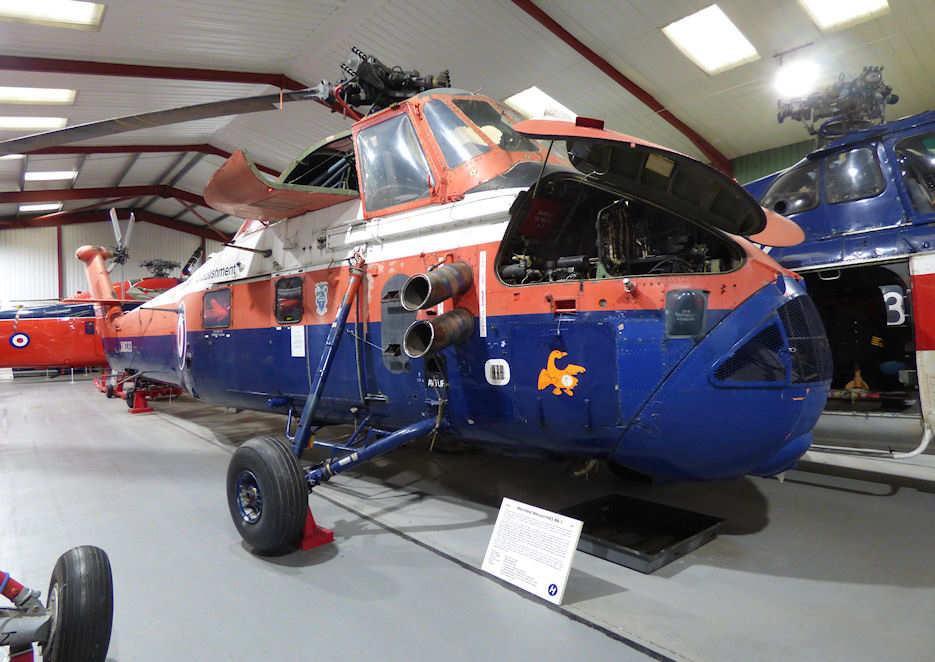Westland Wessex HAS Mk.1

Registration: XM330
Country of origin: UK
Built: Yeovil, England, 1959
Manufacturer: Westland Helicopters
Constructor's Number: WA11
Engine: One 1450shp Napier Gazelle NGa13 turboshaft engine
Type: Anti-submarine warfare helicopter
Note: An early pre-production example of the Wessex used by the Royal Aircraft Establishment for flight and weapon trials.
Details: In 1956 Westland took a piston-engined Sikorsky S-58 and replaced the 1525hp radial engine in the nose with the British Napier Gazelle turboshaft, an early example of the now common use in helicopters of a turbojet engine adapted to drive a shaft connected to a gearbox and rotor system
In its initial version as the Wessex Mk.1, the anglicised WS-58 was developed for the Royal Navy for the anti-submarine warfare role with an electronic flight control system and auto-stabilisation to permit night operations. The new 1450shp turboshaft not only offered valuable power reserves and greater reliability, but was smaller and half the weight of the piston engine allowing the helicopter to carry more. It also ran on kerosene, eliminating the need to store high octane petrol aboard ships. Entering service in 1961, the last Wessex Mk.1 was retired in 1979, by which time its roles had expanded to include commando assault and search and rescue operations.
This example (XM 330) was a pre-production aircraft used for trials work, initially at Boscombe Down from whence it carried out tropical trials in Libya and Malta in 1961, and anti-tank missile firing tests on Salisbury Plain in 1962. The aircraft was then transferred to the Royal Aircraft Establishment at Farnborough for experimental test work.
Performance:
Max Speed: 212 km/h/ 132 mph
Empty Weight. 3447 kg (7600 lb)
Range: 630 km (390 miles)
Capacity/Load: 4-16 persons / 2.268 kg (5000 lb)
Power: 1x 1450shp Napier Gazelle NGa13 turboshaft
Weapons: 2 x Mk.44 homing torpedoes or 4 Nord SS.11/A512, wire-guided missiles or 2 inch Air to Surface rockets, 7.620 mm machine guns